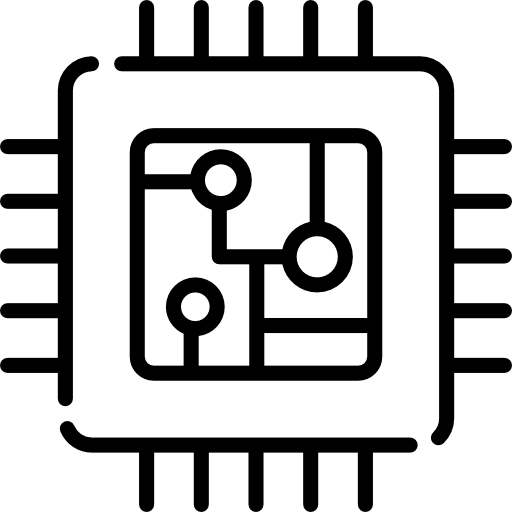Foundational AI ML capabilities AWS Cloud Adoption Framework for Artificial Intelligence, Machine Learning, and Generative AI
Our first detailed look at the AI talent picture signals the maturation of AI, surfaces the most common strategies organizations employ for talent sourcing and upskilling, and shines a light on AI’s diversity problem—while showing yet again a link between diversity and success. A key factor for government agencies to consider is that the private sector, under the right circumstances and acquisition strategies, is willing to assume more risk than the federal government is able to, serving to shield agencies from crises and protect the public interest. Not only are government contractors able to help mitigate risk, but they are also deeply familiar with the federal landscape. Identifying and understanding federal agencies’ limitations in adopting and implementing new technologies will be instrumental in addressing them.
Therefore, to de-risk this journey for customers, the AWS CAF-AI provides these observations
Develop a human-centered talent strategy
learned from thousands of customers as best practices. At AWS over the last 10 years, we have built the AWS Cloud Adoption Framework (AWS CAF) as a cornerstone for our customers’ cloud adoption strategy. While evolving this framework, we have kept it largely unbound to specific technologies beyond the cloud to make sure that its insights and mental model can be used by many of our diverse customers.
Effective collaboration and communication among teams are critical to good governance because that is the only way to avoid conflicts and ensure all concerns are heard and addressed. For more expert guidance and best practices for your cloud architecture—reference architecture deployments, diagrams, and whitepapers—refer to the AWS Architecture Center. This marks the fifth consecutive year we’ve conducted research globally on AI’s role in business, and we have seen shifts over this period. We invite you to learn more about our deep data engineering and AI/ML capabilities, and how we’re ready to meet you anywhere on the AI/ML path — with practical and results-driven solutions. Technological challenges and storage represent the two pivotal impediments obstructing AI/ML utilization in the federal landscape. And with new policies constantly on the horizon, there is a race to understand the proper use and implementation of cutting-edge technology.
It’s early days still, but use of gen AI is already widespread
But a look at the strategies of high performers suggests organizations might be best served by tapping as many recruiting channels as possible (Exhibit 2). The findings show that while they’re more likely to recruit from top-tier technical universities and tech companies, they’re also more likely to source talent from other universities, training academies, and diversity-focused programs or professional organizations. When asked about the types of sustainability efforts using AI, respondents most often mention initiatives to improve environmental https://www.globalcloudteam.com/ impact, such as optimization of energy efficiency or waste reduction. AI use is least common in efforts to improve organizations’ social impact (for example, sourcing of ethically made products), though respondents working for North American organizations are more likely than their peers to report that use. Businesses across industries are turning to artificial intelligence and machine learning (AI/ML) to cost-effectively move quickly, improve product offerings, use the latest tools and technologies, and predict customer behavior.
It paves the way for numerous potential applications, from intelligent process automation (IPA) and natural language processing (NLP) to computer vision and advanced data analytics. The emergence of foundation models—large-scale, deep learning models trained on massive, broad, unstructured data sets—has enabled entrepreneurs and business executives to see the possibility of true scale. Although previous releases (including Open AI’s GPT series, CLIP, DALL-E 2, Google’s Imagen and PaLM, Midjourney, and Stable Diffusion) have helped pave the way, the release of ChatGPT represents a tectonic shift.
This is why pairing a larger picture
with many pragmatic and actionable steps and measurable KPIs on these smaller steps is crucial. Rather, evolve the foundational capabilities and improve your AI/ML readiness as you progress
through your AI/ML transformation journey. To capture the full potential of AI/ML, mainstream adopters will need to rethink the ways they frame business problems, build their enterprise architecture, and revisit their talent strategy. Responses suggest that both AI high performers and other organizations are upskilling technical and nontechnical employees on AI, with nearly half of respondents at both AI high performers and other organizations saying they are reskilling as a way of gaining more AI talent.
With a comprehensive portfolio of data engineering and AI/ML capabilities, our AI development team will help you use your data to make smart decisions, improve collaboration, transform customer experiences and drive better outcomes. For example, with the Pentagon’s Chief Digital and Artificial Intelligence Office (CDAO) teed up to release a unified Data Analytics and AI Adoption Strategy this year, it is crucial to understand the fundamental challenges organizations face regarding AI and ML. This strategy will guide the many businesses in developing and adopting data analytics and AI capabilities.
Along with their ability to provide rapid response and be nimble, contractors are proven to be cost-effective and scale rapidly. Contractors can efficiently adapt to project needs and bring specialized expertise, bridging the knowledge gap. Government contractors provide an untapped potential and should be considered when looking for implementation support for new technologies. Due to the vast amounts of sensitive and personal data that agencies work with, early adoption can raise security concerns.
- As the chief cloud strategy officer for Deloitte Consulting LLP, David is responsible for building innovative technologies that help clients operate more efficiently while delivering strategies that enable them to disrupt their markets.
- However, high performers are taking more steps than other organizations to build employees’ AI-related skills.
- Furthermore, 79% of respondents now view AI/ML as highly significant, compared to 53% in 2020.
- Respondents at these organizations are over three times more likely than others to say their organizations will reskill more than 30 percent of their workforces over the next three years as a result of AI adoption.
- For more than 20 years, he has inspired corporations and start-ups to innovate and use resources more productively.
The contributors to the development and analysis of this survey include Michael Chui, a partner of the McKinsey Global Institute who is based in McKinsey’s San Francisco office, and Sankalp Malhotra, an alumnus of the New York office. High performers are also much more likely than other organizations to go beyond providing access to self-directed online course work to upskill nontechnical employees on AI. Respondents at high performers are nearly twice as likely as others to report offering peer-to-peer learning and certification programs to nontechnical personnel.
With all eyes on gen AI, AI adoption and impact remain steady
The survey results show that AI high performers—that is, organizations where respondents say at least 20 percent of EBIT in 2022 was attributable to AI use—are going all in on artificial intelligence, both with gen AI and more traditional AI capabilities. These organizations that achieve significant value from AI are already using gen AI in more business functions than other organizations do, especially in product and service development and risk and supply chain management. These organizations also are using AI more often than other organizations in risk modeling and for uses within HR such as performance management and organization design and workforce deployment optimization. Our latest survey results show changes in the roles that organizations are filling to support their AI ambitions.
By working with specialists who have an in-depth understanding of the technology, health care leaders can navigate the complexities, maximize their return on investment, and ensure the technology is tailored to meet their unique needs. For each of these perspectives, there is a natural or logical order by which the
capabilities are addressed or improved, which orders your areas of action for your AI/ML
transformation journey in time. The following image depicts this exemplary order and the
assessment mentioned previously is best used to establish which of these capabilities already
exist in the organization and to which degree from an AI/ML perspective. Here are four common challenges that companies implementing ML-based systems may encounter, along with some expert tips to maximize the impact of algorithms while avoiding missteps. While you iterate through these cycles, recognize the limits of what you can achieve in a
single cycle. It is important to be ambitious and aim high, but trying to do everything in the
same cycle can lead to discouragement in the organization.
When asked about the biggest challenges to AI adoption, respondents indicate that the most common barrier is also strategy related. They most often cite a lack of a clear AI strategy (Exhibit 4), followed by a lack of appropriate talent, functional silos that constrain end-to-end AI solutions, and a lack of leaders who demonstrate ownership of and commitment to AI. When it comes to digital transformation, the Covid crisis has provided important lessons for business leaders. Among the most compelling lessons is the potential data analytics and artificial intelligence brings to the table.
Once a business has confirmed that a problem should be solved using ML, framing the problem3 involves defining the ideal outcome and objective, identifying the model’s output, and defining success criteria for all relevant stakeholders (including direct impact and potential externalities). All organizations report that hiring AI talent, particularly data scientists, remains difficult. AI high performers report slightly less difficulty and hired some roles, like machine learning engineers, more often than other organizations. The contracting community has many thought leaders who can validate the proper usage and application of AI and ML and strengthen the federal government’s willingness to participate in adopting emerging technologies. A lot of companies like ours are willing to partner with the government transparently to examine the risks and benefits of emerging AI technology. As the chief cloud strategy officer for Deloitte Consulting LLP, David is responsible for building innovative technologies that help clients operate more efficiently while delivering strategies that enable them to disrupt their markets.
For each of these, at least 20 percent of respondents say their companies
have already embedded these technologies into their business processes. Physical robotics and autonomous vehicles are the least commonly deployed, largely because they are relevant only to companies in industries where there’s a clear application; in those sectors, respondents report the outsize use of the capabilities. For example, half of respondents in automotive and assembly (compared with 16 percent of the total average) say physical robotics are embedded in at least one function or business unit. And while the adoption of AI is still in its early days, the results suggest that it’s already reaping meaningful rewards. Across business functions, respondents using AI in manufacturing and risk indicate they are seeing the greatest value (Exhibit 2). The survey findings suggest that many organizations that have adopted AI are integrating AI capabilities into their sustainability efforts and are also actively seeking ways to reduce the environmental impact of their AI use (exhibit).
The share of organizations that have adopted AI overall remains steady, at least for the moment, with 55 percent of respondents reporting that their organizations have adopted AI. Less than a third of respondents continue to say that their organizations have adopted AI in more than one business function, suggesting that AI use remains limited in scope. Product and service development and service operations continue to be the two business functions in which respondents most often report AI adoption, as was true in the previous four surveys. And overall, just 23 percent of respondents say at least 5 percent of their organizations’ EBIT last year was attributable to their use of AI—essentially flat with the previous survey—suggesting there is much more room to capture value. Of the nine capabilities we asked about, robotic process automation, computer vision, and machine learning are most commonly deployed.






